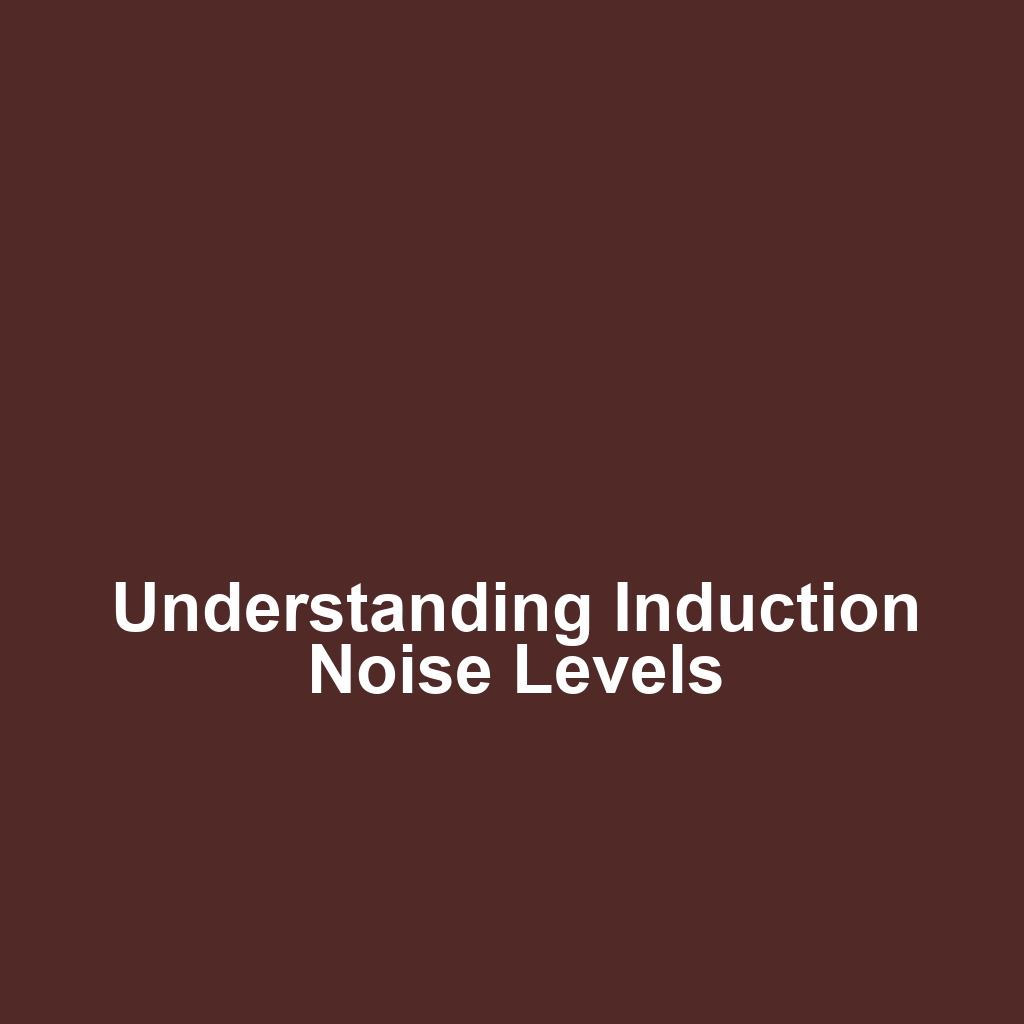As we delve into the world of induction noise, we realize how crucial it is to understand its implications on our equipment. We’ve noticed that various sources contribute to this phenomenon, and it’s essential to identify them for effective management. By employing different measurement techniques, we can accurately gauge the levels of induction noise we’re dealing with. It’s fascinating to see how this noise impacts our machinery and overall operations. Together, we can explore strategies to mitigate the effects of induction noise and enhance our systems’ performance.
Understanding Induction Noise
We’ve noticed that induction noise can significantly impact our overall system performance. It’s essential to recognize the sources of this noise in our environment. We often find that electrical equipment and machinery contribute to these disturbances. Understanding the frequency and amplitude of the noise helps us pinpoint its effects. We’ve observed that certain operating conditions amplify induction noise levels. It’s crucial for us to measure these levels regularly to maintain optimal performance. We can implement strategies to mitigate the noise once we understand it better. Our team’s collaboration is key in addressing these challenges effectively. Together, we can enhance our system’s reliability and efficiency.
Sources of Induction Noise
Sources of induction noise can significantly impact our equipment’s performance and reliability. We’ve noticed that nearby electrical devices often contribute to this interference. Our observations show that power lines can be a significant source of noise as well. We can also attribute some of this noise to faulty grounding or shielding in our systems.
In many cases, electromagnetic interference from other machinery plays a role in the levels we measure. We’ve found that environmental factors, like humidity and temperature, influence the noise levels too. Our team has identified that certain materials used in construction can amplify these induction noises. We’ve also considered that the placement of our equipment affects how much noise we’re exposed to. Ultimately, addressing these sources is crucial for optimizing our system’s functionality.
Measurement Techniques for Induction Noise
Measurement techniques for induction noise involve various methods that help us accurately assess the levels of interference present. We often utilize spectrum analyzers to visualize the frequency components of the noise. By employing oscilloscopes, we can capture transient events that may contribute to induction noise. We’ve also found that using measurement microphones allows us to assess the acoustic effects of the interference. In our investigations, we typically apply differential measurement techniques to minimize common-mode noise. We sometimes rely on data acquisition systems to record long-term trends in noise levels. Additionally, we incorporate shielding and grounding techniques to enhance the accuracy of our measurements. It’s essential for us to calibrate our instruments regularly to ensure precise readings. Overall, these diverse measurement techniques provide us with a comprehensive understanding of induction noise levels.
Impact of Induction Noise on Equipment
Induction noise levels can significantly affect our equipment’s performance and longevity. We’ve noticed that high noise levels can lead to reduced efficiency in our systems. It’s crucial for us to monitor these levels regularly to avoid potential damage. When the noise exceeds a certain threshold, we find that the wear on components increases. This directly impacts our maintenance schedules and costs. We’ve also observed that excessive noise can lead to erratic behavior in machinery. This unpredictability can hinder our production processes and lead to downtime. Our team’s commitment to understanding and mitigating these noise levels is essential. By addressing induction noise, we can enhance both reliability and productivity.
Mitigating Induction Noise Effects
Mitigating induction noise effects involves implementing various strategies that can significantly enhance our system’s performance. We’re focusing on shielding our equipment to minimize electromagnetic interference. By using twisted pair cables, we’re reducing the loop area and limiting noise pickup. We’ve also considered filtering techniques that can help in eliminating unwanted frequencies. It’s crucial that we maintain proper grounding to ensure a stable reference point. Additionally, we’re optimizing the layout of our components to minimize noise coupling. Regular maintenance checks help us identify potential sources of induction noise early. We’ve found that training our team on these practices leads to better adherence. Through these methods, we’re confident that we can significantly reduce the impact of induction noise.
Frequently Asked Questions
How does induction noise differ from other types of electrical noise?
Induction noise mainly arises from electromagnetic interference, which sets it apart from other types of electrical noise that might result from thermal or shot noise. We can see that while induction noise is often caused by fluctuating magnetic fields, other noises don’t necessarily share that characteristic.
What are the long-term effects of exposure to high induction noise levels?
We’ve noticed that prolonged exposure to high induction noise levels can lead to hearing issues and increased stress levels. It’s crucial for us to monitor these conditions to protect our overall well-being.
Are there specific industries more affected by induction noise?
Certain industries, like manufacturing and construction, tend to be more affected by induction noise due to their heavy machinery and equipment. We’ve seen that workers in these sectors often experience higher noise levels, which can impact their overall well-being.
Conclusion
In conclusion, we’ve recognized how essential it is to understand and manage induction noise for the efficiency of our systems. By identifying noise sources and employing effective measurement techniques, we can gain valuable insights into their impact on our equipment. It’s clear that proactive strategies, such as shielding and proper grounding, play a significant role in minimizing disruptions. Regular assessments not only help us maintain performance but also extend the lifespan of our machinery. Ultimately, by addressing induction noise, we can enhance productivity and ensure smoother operations in our environments.
If you’re looking to enhance your skincare routine while understanding the effects of induction noise levels, I highly recommend visiting this helpful page on how to use Glo24k for skincare. You’ll discover valuable tips and techniques to maximize your skincare regimen effectively. Check it out here: how to use glo24k.
